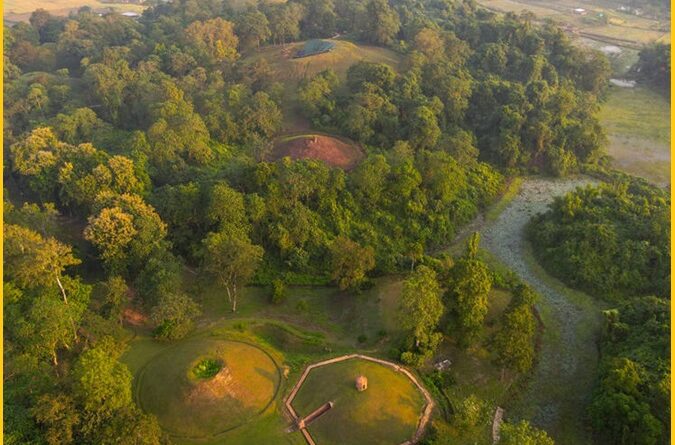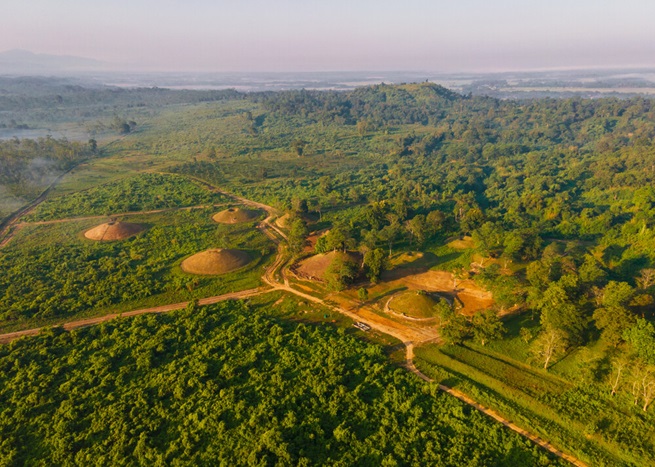Ahom Moidams: The Sacred Mound-Burials of Assam
Ahom Moidams
Moidams, the mound-burial system of the Ahom Dynasty, represent a royal cemetery established by the Tai-Ahom people in northeastern India. Located at the foothills of the Patkai Ranges in eastern Assam, the site holds sacred significance for the Tai-Ahom and reflects their unique funerary traditions.
Under the leadership of Prince Siu-Ka-Pha, the Tai-Ahom migrated to present-day Assam in the 13th century and chose Charaideo as their first capital and the site for this royal necropolis. Over 600 years (13th to 19th centuries CE), they constructed Moidams, meaning “home for spirit,” harmonizing with the natural landscape of hills, forests, and water. The sacred geography was further enhanced by planting holy trees and creating water bodies, blending spiritual and natural elements.
Mound-Burial System
The Charaideo necropolis houses 90 Moidams, situated on elevated terrain. These burial mounds, or Ga-Moidams, are constructed by building an earthen mound over a hollow vault (Tak) made of brick, stone, or earth, topped by a shrine at the center of an octagonal wall (Garh), symbolizing the Tai universe. At the summit, the Mungklang shrine represents a golden ladder, symbolizing the connection between heaven and earth.
The vaults enshrine the buried or cremated remains of kings and other royals, accompanied by grave goods such as food, horses, elephants, and occasionally queens and servants. Over time, the Moidams have evolved in materials and design, reflecting changes in the burial traditions of the Tai-Ahom dynasty.
The UNESCO World Heritage List
Moidams, the mound-burial system of the Ahom Dynasty, stand as enduring evidence of 700 years of Tai-Ahom royal funerary architecture and customs, reflecting their cultural traditions from the 13th to 19th centuries CE. The archaeological remains of these Moidams showcase the architectural designs, layouts, and expressions of Tai-Ahom beliefs and traditions.
The 700-year-old Moidams, the Ahom dynasty burial mounds in Assam, were added to the UNESCO World Heritage List in 2024. According to UNESCO, “Moidams are vaulted chambers (chow-chali), often double-storied, with an arched passage for entry. They hold the remains of kings, royals, and grave goods like food. Over time, these mounds become covered in vegetation that resembles small hillocks.
Also Read- Kaas Pathar: A UNESCO World Heritage Site of Floral Splendor




